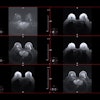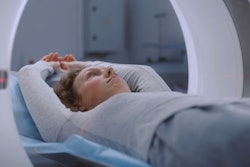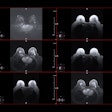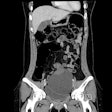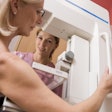While breast cancer predominantly affects female patients, society needs to stop thinking of this disease as a “women-only” cancer. That's the view of Dr. Anna D'Angelo, consultant radiologist at the Foundation Polyclinic University A. Gemelli, Rome, who is calling for more inclusive breast cancer screening and imaging programs to allow equitable access to breast healthcare for transgender and male patients.
“Breast cancer is considered a female cancer, and it is easy to understand why, but we also know that it can affect male patients in 1% of cases. In addition, trans men who still have breasts can also develop this cancer, as can trans women who have undergone hormone treatment,” she noted in an interview with AuntMinnieEurope. “There needs to be a rethink, not only on how to include transgender patients but also on how to stop thinking of breast cancer as a disease that only concerns women.”
D’Angelo, who is a member of the European Society of Breast Imaging (EUSOBI) Young Club Committee, explained how EUSOBI is working to improve inclusion of transgender patients and cisgender men (men assigned male at birth) in breast cancer care through webinars, workshops, and lectures at its conferences.
It’s essential to broaden our perception of breast cancer and to include transgender patients, D’Angelo said. Videos produced by Christof.G.Pelz | GRAFIFANT Creation | www.grafifant.at | 2025
Radiology training schemes may also soon include dedicated education, and this is largely thanks to scientific societies like EUSOBI and ESR raising awareness about transgender patients, which in turn has contributed to transgender patients feeling that they can “come out” to their healthcare provider, she explained.
In November 2025, EUSOBI is due to launch a survey among its members to collect data about the transgender population to identify areas that need improvement with a view to establishing training and educational activities on the topic.
Raising awareness of the issues is much needed, as a recent Baltic survey highlighted, she added. The survey undertaken in April by Dr. Anete Purvlice, from Riga East University Hospital and supervised by D’Angelo, showed disappointing results, revealing that 50% of breast radiologist respondents had never managed transgender patients. Also, in 50% of Baltic hospitals, imaging departments saw fewer than 10 transgender patients per year. Furthermore, in 77% of hospitals, intake forms didn’t allow for registering and recording the chosen name of the patient, only the legal name.
“These factors contribute to creating barriers between the patient and the healthcare providers, and this discourages them from taking part in breast cancer screening,” D’Angelo said.
So how can radiologists encourage more transgender patients to enroll in screening? The situation is complex and the answer is at least twofold, she noted.
First, more data must be collected and shared about epidemiology, the real risk of breast cancer in this population, and outcomes. “At the moment, we only have guidelines from mixed populations including cis- and transgender people. More data will provide scientific-based evidence to make tailored recommendations and guidelines for the inclusion of transgender patients in national breast cancer screening programs. We also need to increase GPs' awareness and knowledge, as they are usually the first doctors that transgender patients consult to find out about breast cancer screening.”
Second, hospitals need to establish gender-free physical spaces in breast units, including bathrooms, waiting rooms, and changing rooms, she continued. In some cases, this is difficult as units have been designed specifically for female patients.
Introducing more gender-neutral spaces within breast imaging department is an important step, according to D’Angelo.
In the past 10 years, breast units everywhere have undergone “pinkification” in their design, according to D'Angelo. In addition to the pink color schemes, signs and notices contain gender-specific terms.
“Such 'feminized' departments create discomfort for our trans male (men assigned female at birth but who are transitioning or have transitioned to male) and cis male patients. Sometimes, the healthcare personnel will even ask these men if they are lost or in the wrong department. This is embarrassing and uncomfortable for them. Where any renovation is being planned, we should promote neutral spaces and colors,” she said.
On the other hand, providing gender-free spaces is not always a simple solution. To avoid upsetting some cis women who also want to feel comfortable and safe, D'Angelo insists on there always being the option of a single-user bathroom or changing room.
She also pointed to the need for an overhaul of hospital information systems to allow departments to record a patient's preferred name, gender identity, and pronouns. So far, the majority of hospital systems only allow for recording sex assigned at birth and legal name, which no longer aligns with patients' chosen identities.
“In some departments, a different type of intake form is used, allowing gender identity, chosen name, and pronouns to be recorded. This means you can avoid asking patients these questions every time they come to the hospital. This can contribute to creating a welcoming and inclusive environment,” D'Angelo noted.
Cost considerations
But making these changes doesn't come without a price tag. Given the low numbers of transgender patients, do the benefits outweigh the costs?
“Transgender patients account for 0.5%-1.5% of the population depending on country, but it's the duty of healthcare providers and scientific societies to ensure safe, respectful, and high-quality care for all our patients,” D'Angelo said. “I think at the end of the day we will see an impact on the quality of care and also health equity, and this will fully justify the investment.”
The benefits of including transgender patients outweigh the costs, D’Angelo explained.




